Tools @ Home | PreK
Resources to Support Your Preschooler
Inspiration from Tools of the Mind to support young children’s learning at home.
Note: We recognize that different states are guiding schools in how to support Learning at Home in different ways. If your child is in a Tools of the Mind classroom, your child’s teacher and school will have guidance and materials they may share directly with you and the ideas here can supplement their guidance.
Show Schedule
 Planning for Play
Planning for Play
The most powerful thing you can do to support your preschool aged child’s self-regulation development is to engage them in make-believe play. Begin by helping your child talk about their plan for play each day. Ask a few questions like, What do you want to play? Who will you be? What things will you use to play? What happens first? Then, have your child draw a play plan. Here’s a quick guide to play plans:
- Child says the plan out loud or uses gesture to show you what they want to do. If your child is using words to express their plan, encourage them to say “I am going to…” For example “I am going to be a nurse” or “I am going to give shots.”
- Child draws who they will pretend to be and what they’ll do. If your child’s play plans from school include writing, your child may also write their plan at home. If your child is not yet writing, write their words for them.
- Child shows you their plan and “reads” it to you or describes the picture. This will help them remember their plan for play today!
- Time for play!

Sample Play Plan 1: “I am going to be a nurse.”
When children begin making play plans…
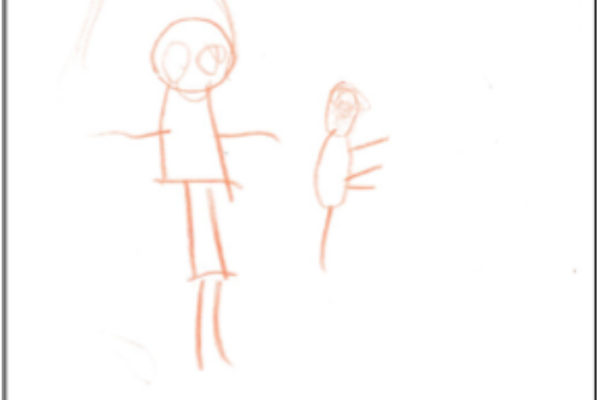
Sample Play Plan 2: “I am going to listen to their heart.”
As children get more practice making play plans…
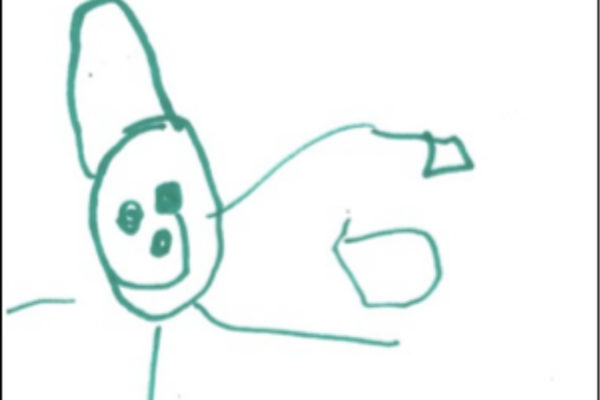
Example Play Plan 3: “I am going to give a shot.”
As children develop, they will be ready to include writing in their plans.
 Make-Believe Play
Make-Believe Play
Make-Believe play is at the heart of the Tools of the Mind curriculum. When children engage in purposeful make-believe play, all domains of development are involved. As they engage in the give and take of play, children develop language, comprehension, empathy, executive function skills and more. Help get your child launched in make-believe play, but if you need to step away to do your own work the play doesn’t need to stop. When there isn’t a person available for your child to play with, stuffed animals and dolls can be part of the fun! See below for ideas to help get make-believe play launched at home. Choose a play theme and begin!

Community: Curbside Library Pick-Up
Guidance and inspiration for a week of make-believe play!
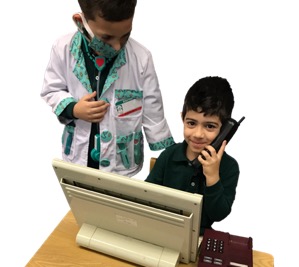
Medical: Telehealth Appointment
Guidance and inspiration for a week of make-believe play!

Grocery: Farmer’s Market
Guidance and inspiration for a week of make-believe play!

Restaurant: Outdoor Dining
Guidance and inspiration for a week of make-believe play!

Library Time, Part 2: Story Time
Continue Library Time make-believe play with Story Time: Fairy Tales!

Library Time, Part 1: Let’s go to the library!
Even though libraries are closed, we can pretend to visit them in make-believe play!
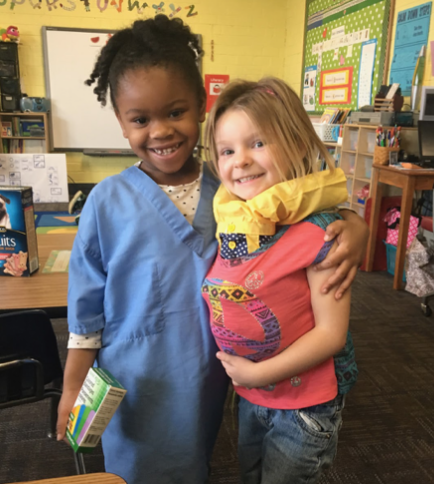
Hospital: Baby Nursery, Part 3
Continue Baby Nursery play. Time to take the baby home!
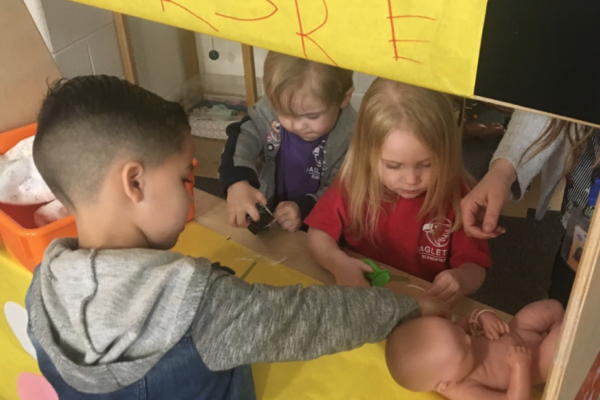
Hospital: Baby Nursery, Part 2
Continue Baby Nursery play–time for baby’s shots!

Hospital: Baby Nursery, Part 1
Launch play in the Hospital Baby Nursery by suggesting a scenario and asking a few questions.

Firefighters, Part 2: At the Fire Station
Continue your firefighter adventures at the fire station!

Firefighters, Part 1: Be a Brave Firefighter
It’s time to fight some fires!

It’s Picnic Time!
What should we pack for our picnic?
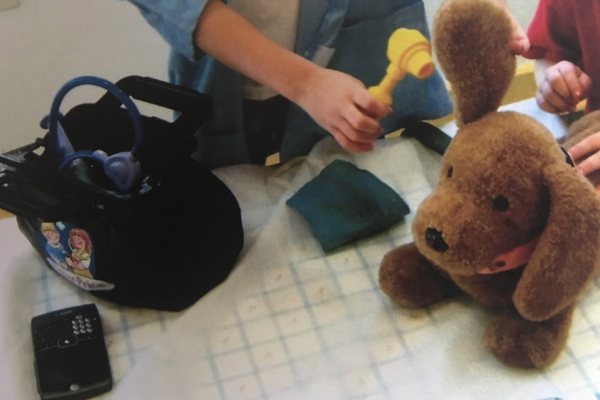
Caring for Your Pet, Part 2: At the Vet
Launch play in pretending to care for a pet who needs to visit the vet!

Caring for Your Pet, Part 1
Launch play in pretending to care for a pet by suggesting a scenario and asking a few questions.
 Math & Science
Math & Science
Math:
In addition to playing board games, card games, and other activities you already have at home for counting practice, here are more ideas for practicing math using the three NCTM (National Council of Teachers of Mathematics) Focal Points: Number Sense, Geometry and Measurement.
Science:
Engage children in exploring Physical Science (Earth, Space and Life) through observation. As your child engages in science activities, be aware of opportunities to build vocabulary and to promote inquiry skills (What do you notice? What do you think will happen?).

Science Activity: What Do You See?
Create a collection of natural objects for your child to observe.
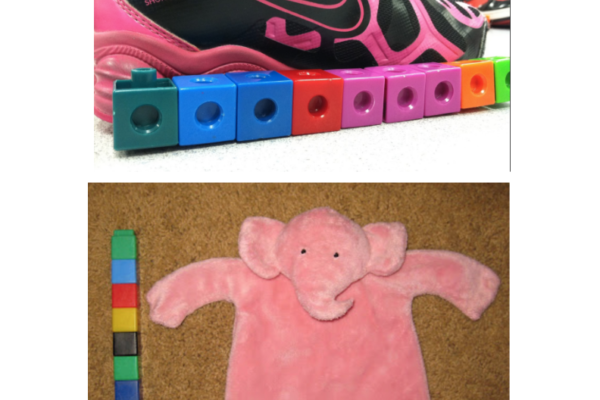
Measurement: Size it Up!
Use objects you have at home to measure length.

Math (& Literacy) Activities: I Have—Who Has? Games Online
Using a computer, tablet or smartphone, your child can now enjoy familiar I Have—Who Has? Games from home!

Math Activity (Geometry): What Do You See?
Engage your child in learning shape names and seeing shapes as part of a larger picture.

Math Activity: Hopscotch
Tape numbered squares to the floor. Have children…

Science Activity:
Look outside a window—it’s spring! Do you…
 Book Time
Book Time
Anytime is a good time to read a book! You can read aloud to your child, or your child can help you “read” a book by describing pictures. Nonverbal children can participate by pointing to pictures, and then you provide a word or description for it. If an adult or older child isn’t available to read aloud, your child can even “pretend” read to stuffed animals. Audio books and videos of books read aloud are more options. Your child will be developing important language and book handling skills as they enjoy books!

Building Story Comprehension
Focus your child’s attention by asking a comprehension question before reading aloud.

Have your child read to YOU!
Try this: Have your child read to YOU! Your child can use the pictures to “read” the story, or to retell a familiar story.
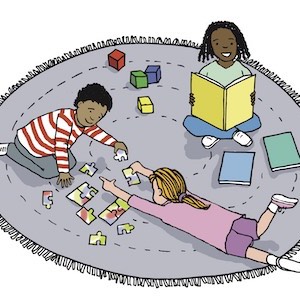 Choice Time
Choice Time
Offer a variety of hands-on activities your child can do fairly independently. Depending on your child and the materials you have at home, this might include drawing with crayons, building with blocks or LEGO, doing puzzles, stringing beads, working with playdough, etc.
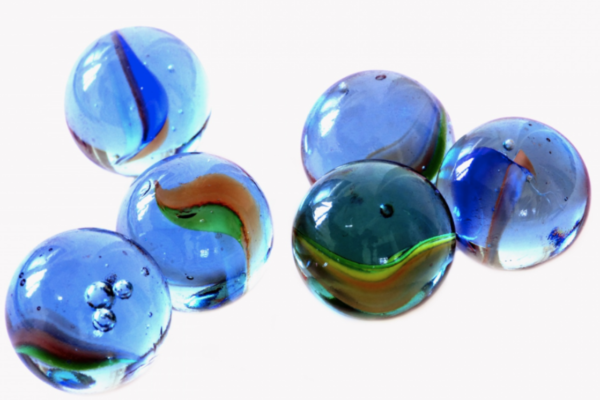
Marble Run Fun
With a couple of marbles and some simple marble runs, your child is in for a lot of fun!
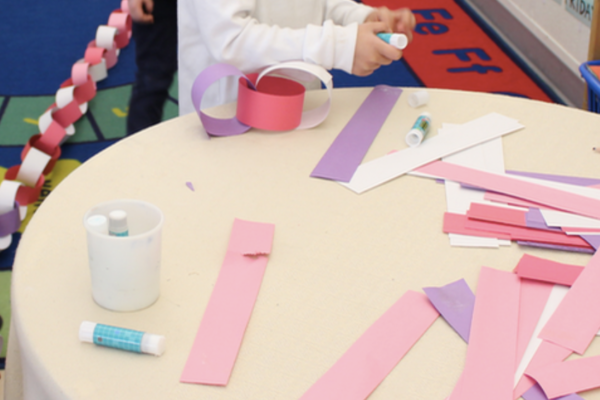
Paper Chain Challenge
How many links is your chain?

Playdough Fun
Make your own playdough!

Shadow Puppets!
Experiment with light…act out your favorite story!

Write a letter to a friend!
Yes…snail mail!

Choice Time Manipulatives
Offer a variety of manipulatives such as LEGO and…